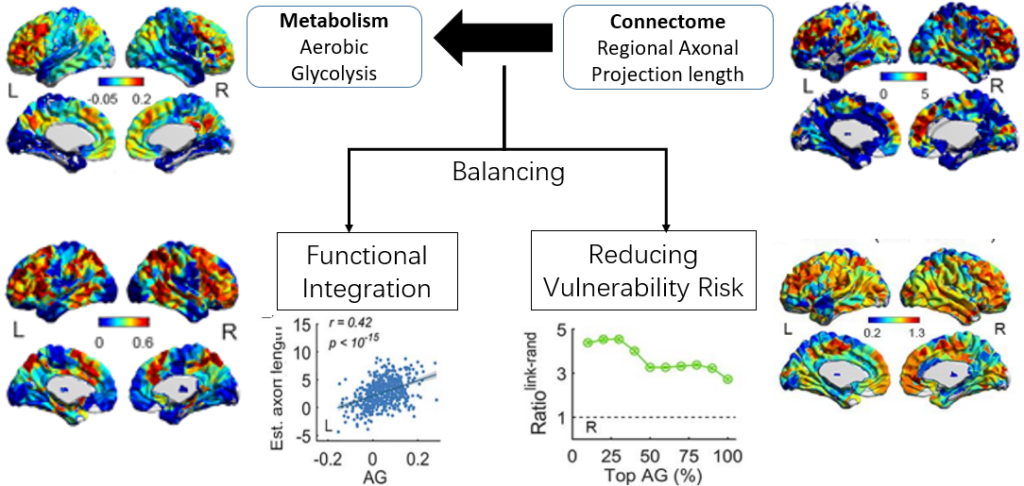The brain regions are structurally connected to form a complex network, described as a “structural connectome”. The brain supports multiple functions with large energy consumption based on the structural connectome. We investigate different mechanisms for shaping the diagrams of structural connectome in the primate brains, and the relationship between connectome, function and metabolism.
Macroscopic level in the structural connectome:
We discovered that the primate macaque brain structural connectome is organized to balance the basic wiring cost and processing efficiency constraints. The important features, the coexistence of modules and hubs, can be recovered under the cost-efficiency trade-off. [Chen et al., 2013, PLoS Computational Biology]

Mesoscopic level in the structural connectome:
Nearly 2/3 of all links in the macaque cortical network can be recovered under the cost-efficiency balance. 60% of links violating the cost-efficiency balance connected to around 10% of brain regions, which are LDCs (long-distance connectors). LDCs play important roles in functional segregation and integration. [Chen et al., 2017, PLoS Computational Biology]


Constructed the large-scale high-density weighted structural connectome of the macaque whole brain.
we acquired a weighted brain structural network across 91 cortical regions of a whole macaque brain hemisphere with a connectivity density of 59% by predicting missing links from the CoCoMac-based binary network with a low density of 26.3%. [Chen* et al., 2020, Cerebral Cortex]


Regional level in the structural connectome:
Uncovering the structural basis of metabolism in the human brain, and showing that the optimized connectivity of brain regions with high metabolic rate reveals a benefit-risk balancing mechanism in the human brain. [Chen et al., 2021, PNAS]

